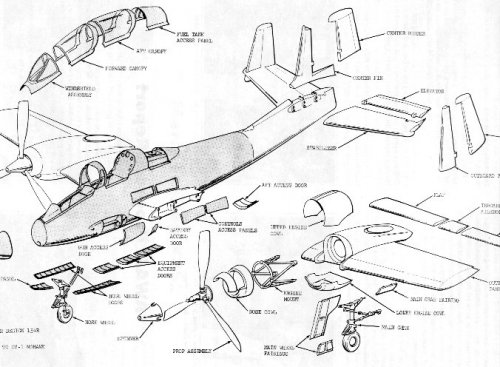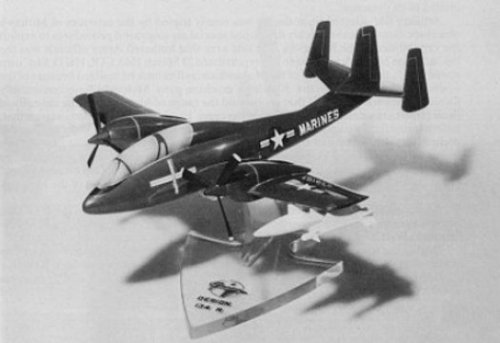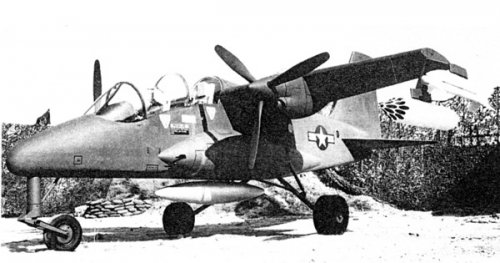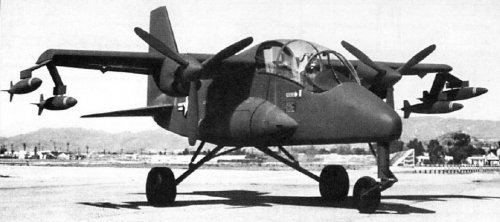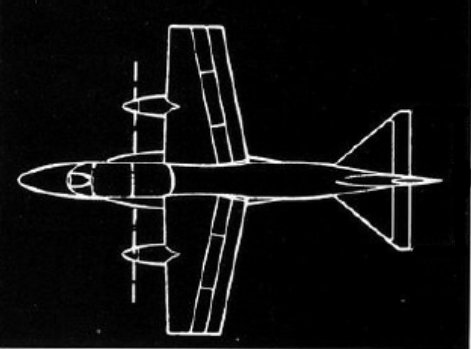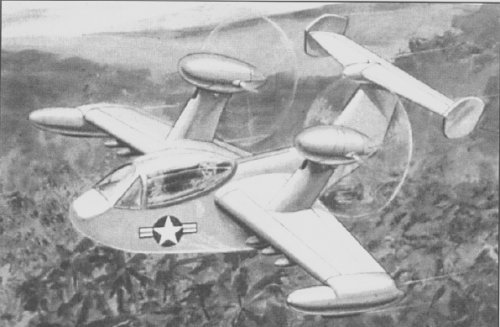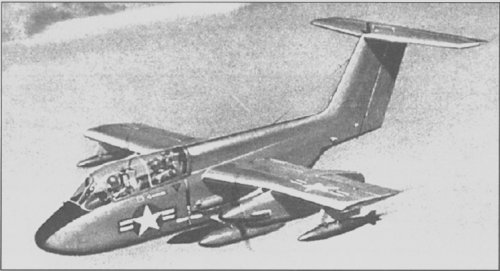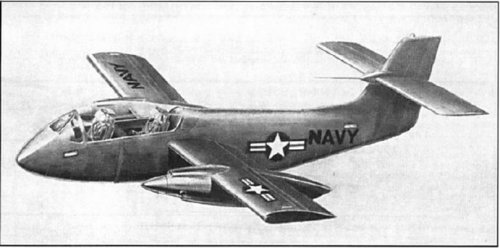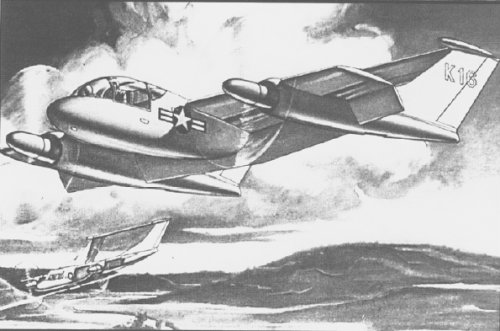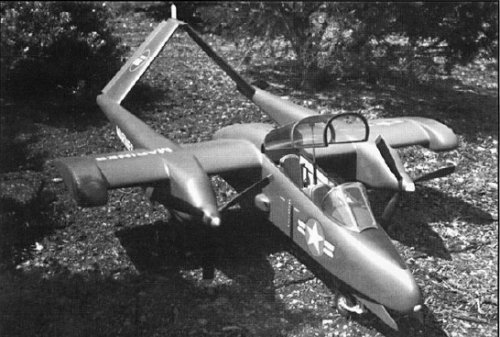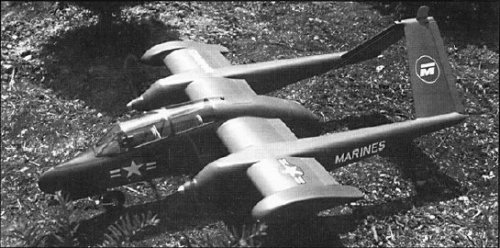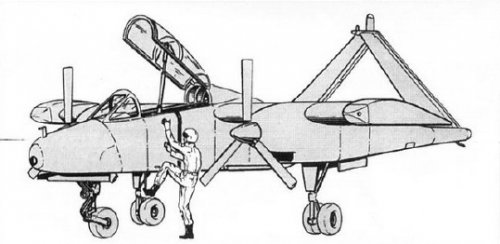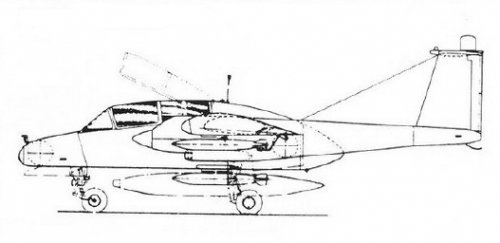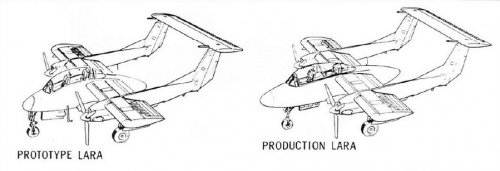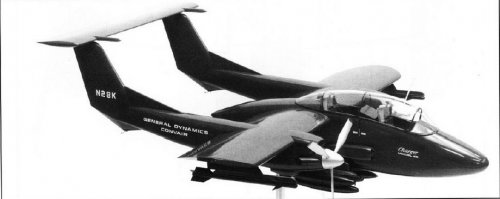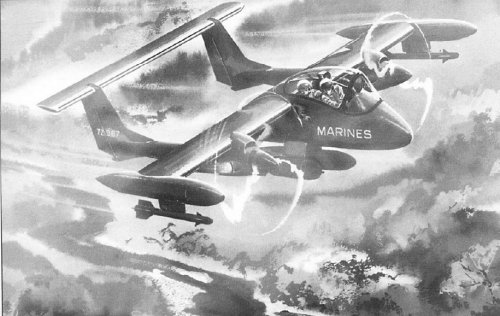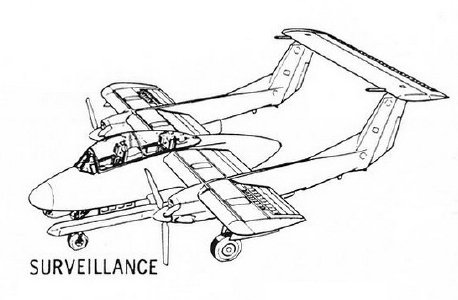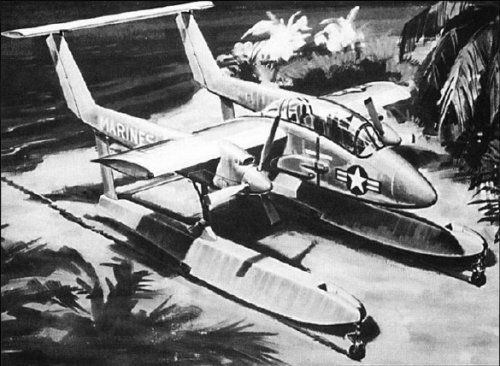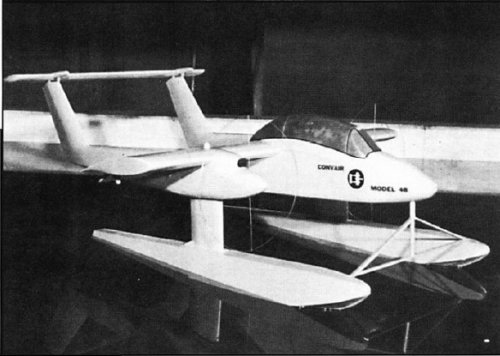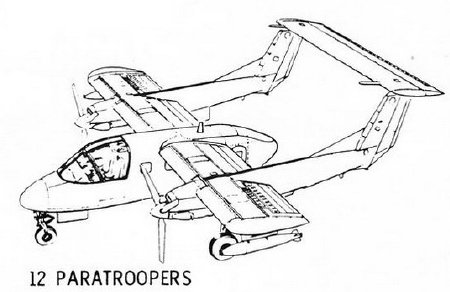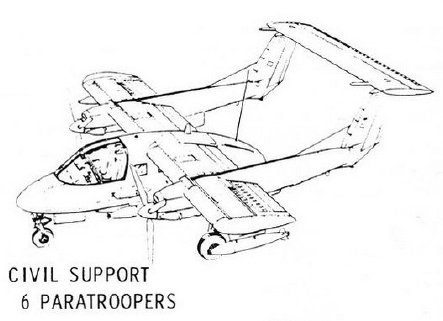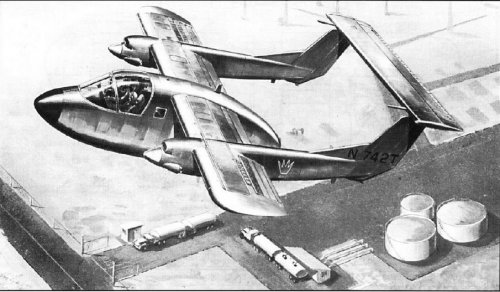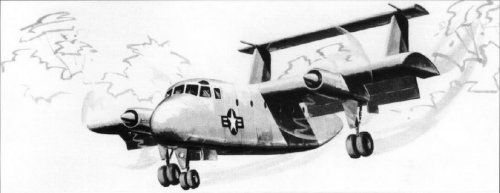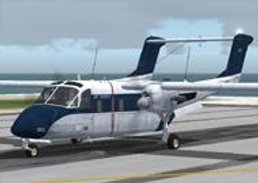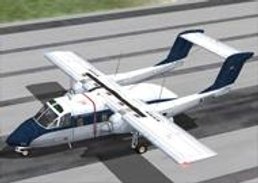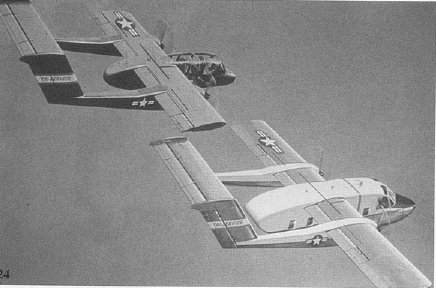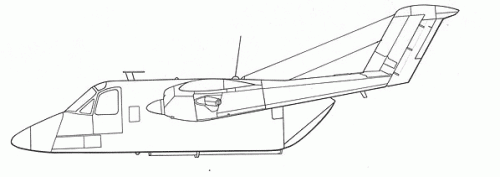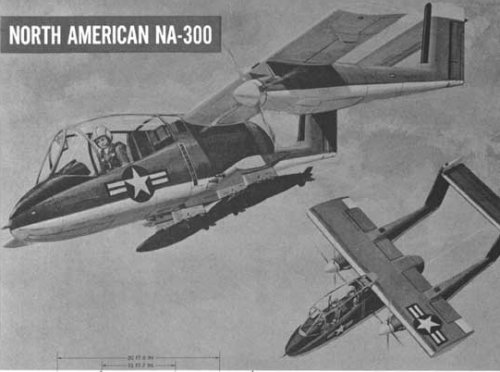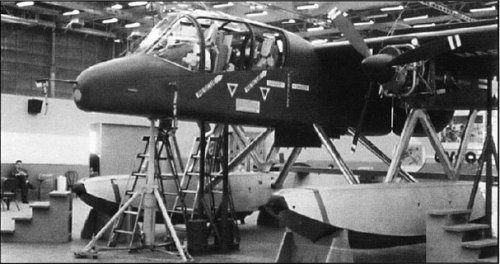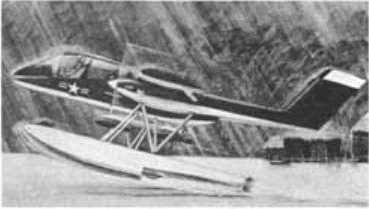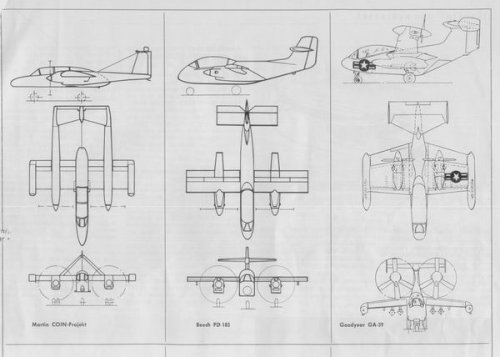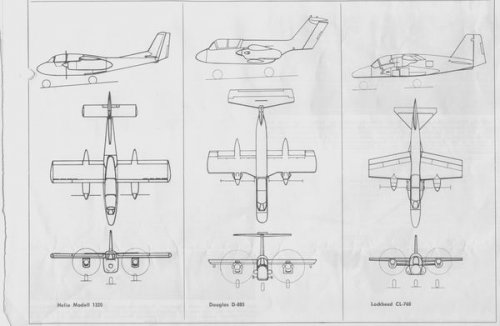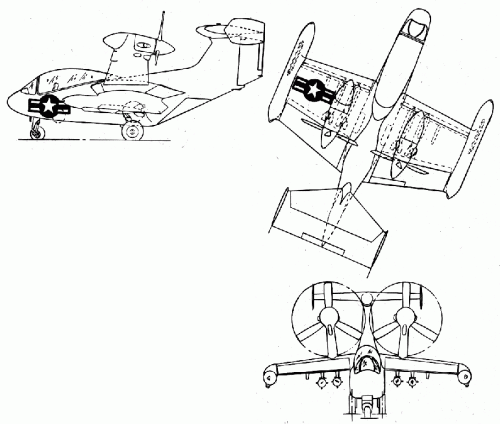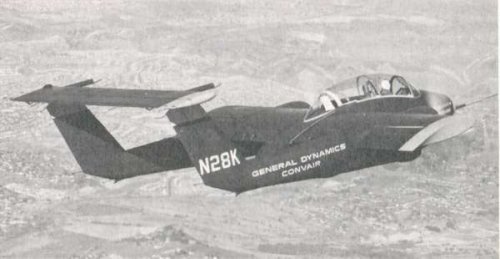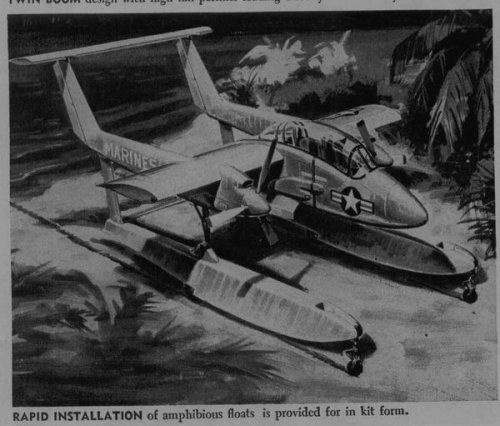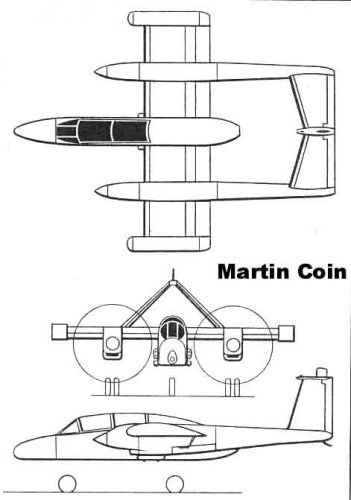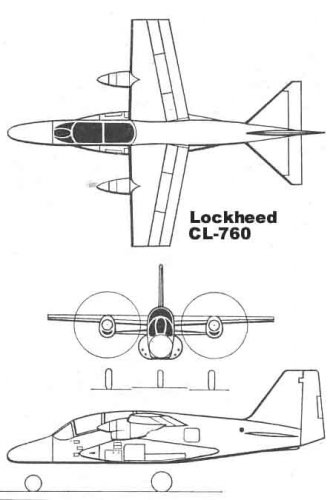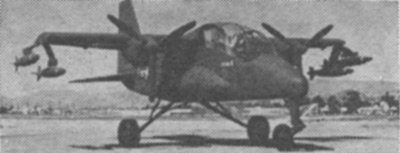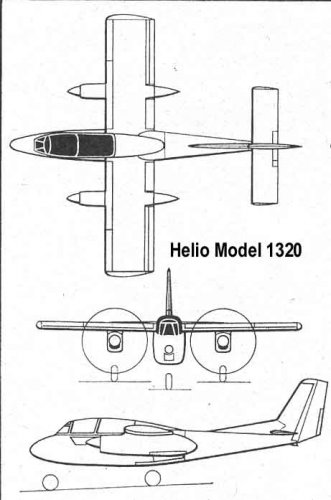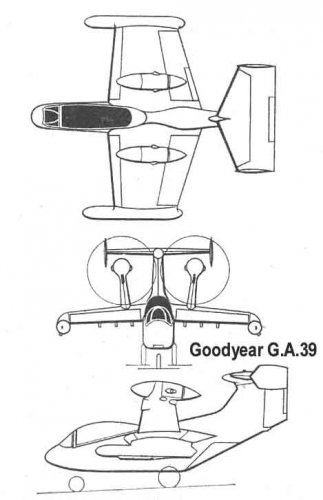The Helio Model 1320 coin proposal (U.S.Navy 1963) utilises experience gained by the company with the H-500 Twin (U-5A). and is powered by two Garrett AiResearch T76-G-6/8 turboprops of 660 s.h.p. The wing is basically that of the H-500, strengthened and restressed, the span being reduced to 33 ft. (10.05 m), and the control system is essentially similar to that employed by the U-5A and U-10A for low-speed control. For an armed reconnaissance mission, the Model 1320 will carry Mk.81 bombs and other stores on external pylons, and for a close-support mission four Mk.82 bombs and four 7.62-mm. Mk.60 machine guns with 500 r.p.g. will be carried. Estimated performance in the armed reconnaissance role includes a maximum speed of 329 m.p.h. (529 km/h) at sea level and 336 m.p.h. (504 km/h) at 1,000 ft. (305 m). Cruising speed at 10,000 ft. (3,048 m) is 236 m.p.h. (380 km/h), and initial climb rate will be 4,200 ft./min. (21.33 m/sec). Combat range will be 547 mls. (880 km), but for ferry purposes this will be extended to 1,434 mls. (2,308km). Empty weight is calculated at 4,760 lb. (2,159 kg), and maximum loaded weight (close support mission) will be 8,585 lb. (3,894 kg).

